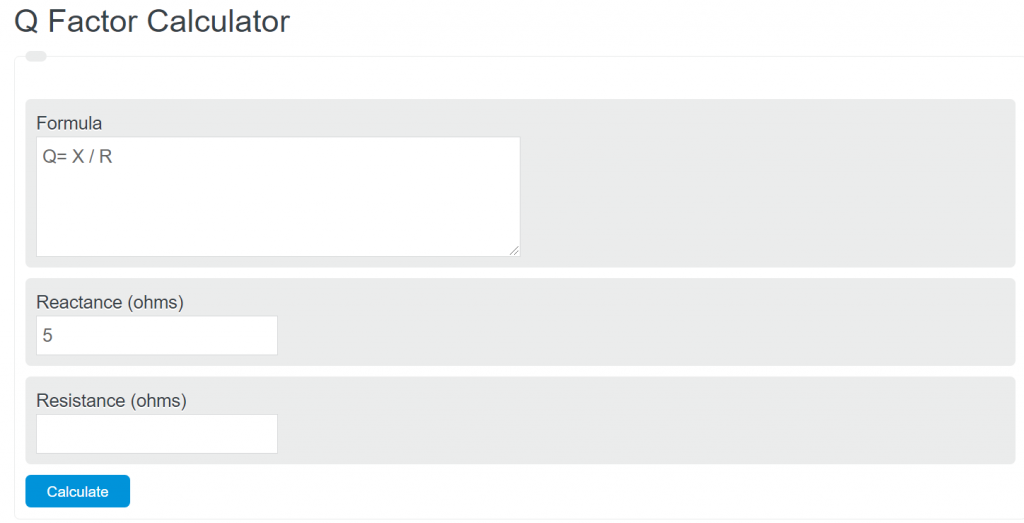Enter the reactance and resistance of a coil or capacitor into the calculator to determine the Q factor, also known as the quality factor.
- Capacitive Reactance Calculator
- Wire Resistance Calculator
- Conductance Calculator
- Inductive Reactance Calculator
Q Factor Formula
The following equation is used to calculate the q factor of a resonator.
Q= X / R
- Q = quality factor
- X = reactance (ohms)
- R = the resistance (ohms)
To calculate the Q Factor, divide the reactance in ohms by the resistance in ohms.
Q Factor Definition
A Q Factor is the ratio of reaction to the resistance of an electrical component. It’s used to measure the quality of an electrical component with respect to the transmittance of electrons.
Q Factor Example
How to calculate a q factor?
- First, determine the reactance.
Calculate the total reactance of the component.
- Next, determine the resistance.
Measure the total resistance of the component.
- Finally, calculate the Q factor.
Calculate the Q factor using the equation above.
FAQ
How do you measure reactance and resistance in an electrical component?
Reactance can be measured using an LCR meter or an oscilloscope that can measure the impedance of the component at a specific frequency. Resistance is typically measured using a multimeter.
Why is the Q Factor important in electrical circuits?
The Q Factor is important because it indicates the efficiency of a resonator or filter circuit in terms of energy loss. A higher Q Factor means less energy is lost to resistance, making the circuit more efficient.
Can the Q Factor affect the performance of an electrical device?
Yes, the Q Factor can significantly affect the performance of an electrical device. Devices with a higher Q Factor will have better selectivity and stability in their operating frequency, which is crucial for applications like radio transmitters and receivers.
Is it possible to increase the Q Factor of an electrical component?
Yes, it is possible to increase the Q Factor by reducing the resistance in the circuit. This can be achieved by using materials with lower resistivity for the conductors or designing the circuit to minimize energy losses.

